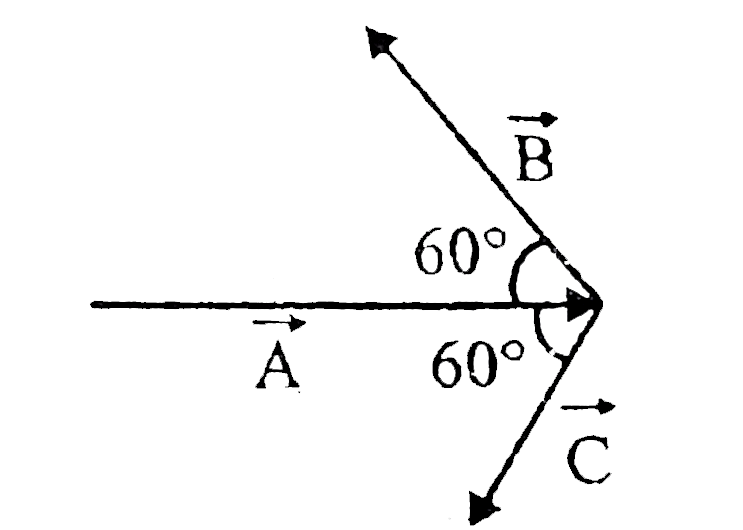If the angle between two vectors A and B is 120∘, then its resultant C will be
C=|A−B|
C<|A−B|
C>|A−B|
C=|A+B|
The correct Answer is:C
To find the resultant vector C when the angle between two vectors A and B is 120∘, we can use the law of cosines. The law of cosines states that the magnitude of the resultant vector C can be calculated using the formula:
|C|=√|A|2+|B|2+2|A||B|cos(θ)
where θ is the angle between the two vectors.
1. Identify the angle and vectors: We know that the angle θ=120∘.
2. Substitute the values into the formula: The cosine of 120∘ is given by:
cos(120∘)=−12
Therefore, we can substitute this value into the formula:
|C|=√|A|2+|B|2+2|A||B|(−12)
3. Simplify the expression:
|C|=√|A|2+|B|2−|A||B|
4. Analyze the options: We need to determine which of the given options is correct based on the derived expression for |C|:
- |C|=|A|−|B|
- |C|<|A|−|B|
- |C|>|A|−|B|
- |C|=|A|+|B|
5. Evaluate the options:
- The expression |C|=|A|−|B| would only hold true if θ=180∘ (which is not the case here).
- The expression |C|<|A|−|B| is false because the resultant cannot be less than the difference of the magnitudes.
- The expression |C|>|A|−|B| is true since the resultant is always greater than the difference of the magnitudes when the angle is less than 180∘.
- The expression |C|=|A|+|B| would only hold true if θ=0∘ (which is also not the case here).
6. Conclusion: The correct option is that |C|>|A|−|B|.
Final Answer:
The resultant C will be greater than |A|−|B|.
cos(120∘)=−12
Therefore, we can substitute this value into the formula:
|C|=√|A|2+|B|2+2|A||B|(−12)
|C|=√|A|2+|B|2−|A||B|
- |C|=|A|−|B|
- |C|<|A|−|B|
- |C|>|A|−|B|
- |C|=|A|+|B|
- The expression |C|=|A|−|B| would only hold true if θ=180∘ (which is not the case here).
- The expression |C|<|A|−|B| is false because the resultant cannot be less than the difference of the magnitudes.
- The expression |C|>|A|−|B| is true since the resultant is always greater than the difference of the magnitudes when the angle is less than 180∘.
- The expression |C|=|A|+|B| would only hold true if θ=0∘ (which is also not the case here).
The resultant C will be greater than |A|−|B|.
Topper's Solved these Questions
Similar Questions
If the angle between two vectors →Aand→B is 90∘ then
View SolutionLet the angle between two nonzero vector →Aand→B is 120∘ and its resultant be →C.
View SolutionLet the angle between two nonzero vector →Aand→B is 120∘ and its resultant be →C.
View SolutionThe angle between two vector A and B is θ. Vector R is the resultant of the two vectors. If R makes an angle θ2 with A, then
View SolutionWhat should be the the angle θ between two vectors →Aand→B for their resultant →R to be (i) maximum (ii) minimum ? Give their resultant value.
View SolutionWhat is the angle between two vector forces of equal magnitude such that their resultant is one-third of either of the original forces?
View SolutionThe resultant of two vectors at right angles is 5 N. If the angle between them is 120∘ and the resultant is √13 then the magnitude of vectors are
View SolutionThree coplanar vectrors →A,→B and →C have magnitudes 4,3 and 2 respectively. If the angle any two vector is 120∘ then which of the following vector may be equal to 3→A4+→B3+→C2

View SolutionTwo vectors A and B are such that A+B=C and A2+B2=C2. If θ is the angle between positive direction of A and B, then the correct statement is
View SolutionTwo vectors A and B are such that A+B=C and A2+B2=C2. If θ is the angle between positive direction of A and B, then the correct statement is
View Solution
